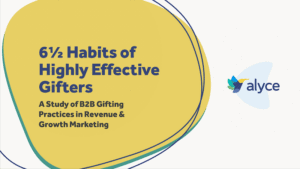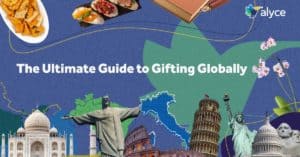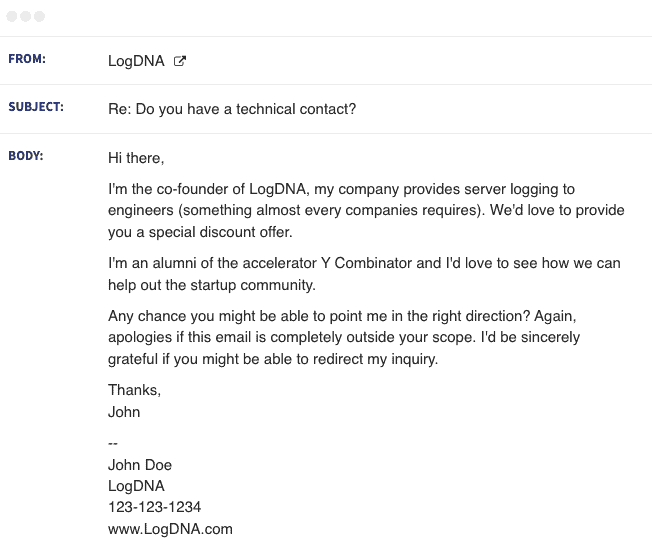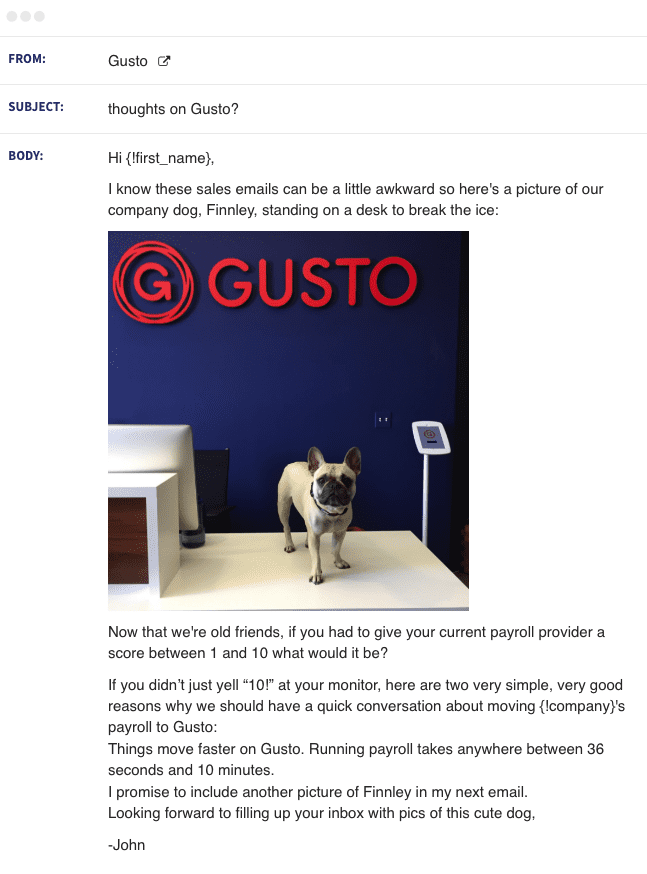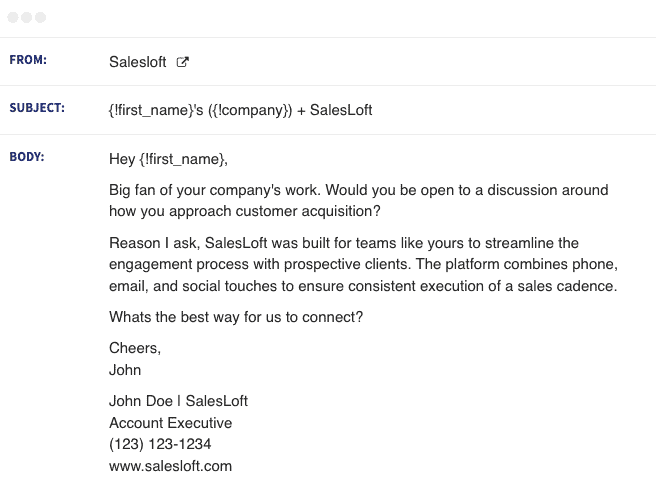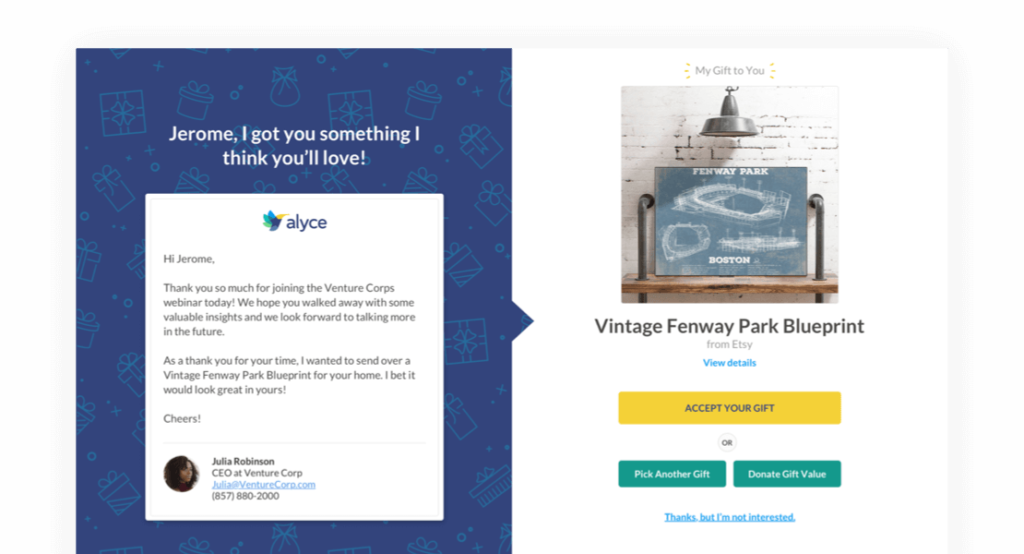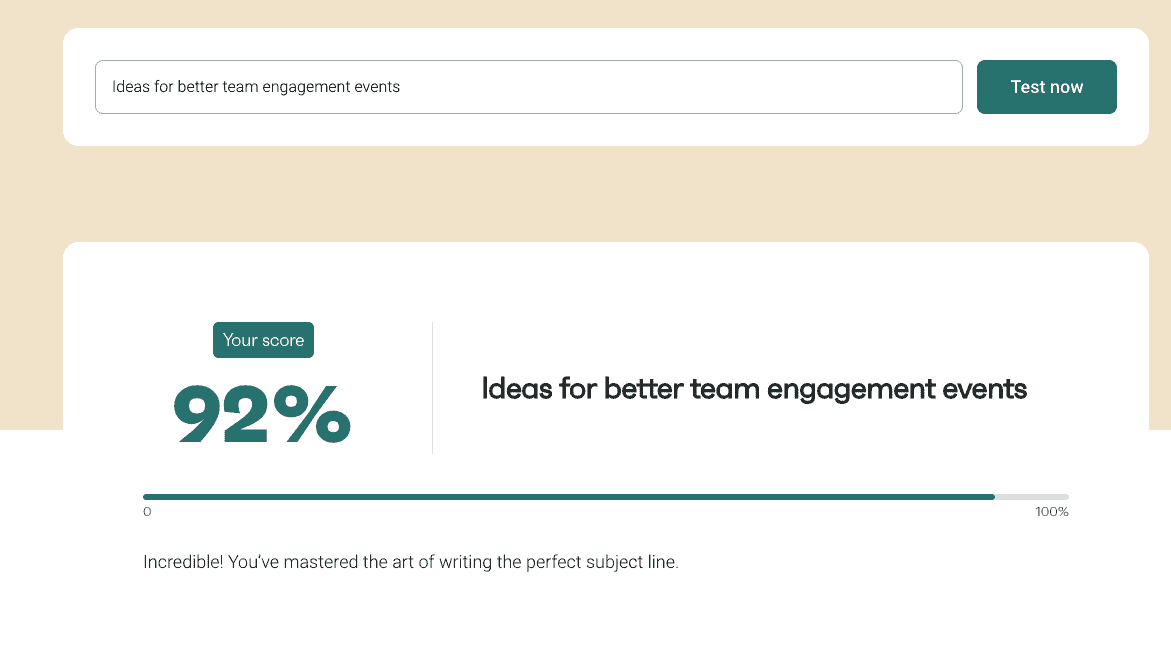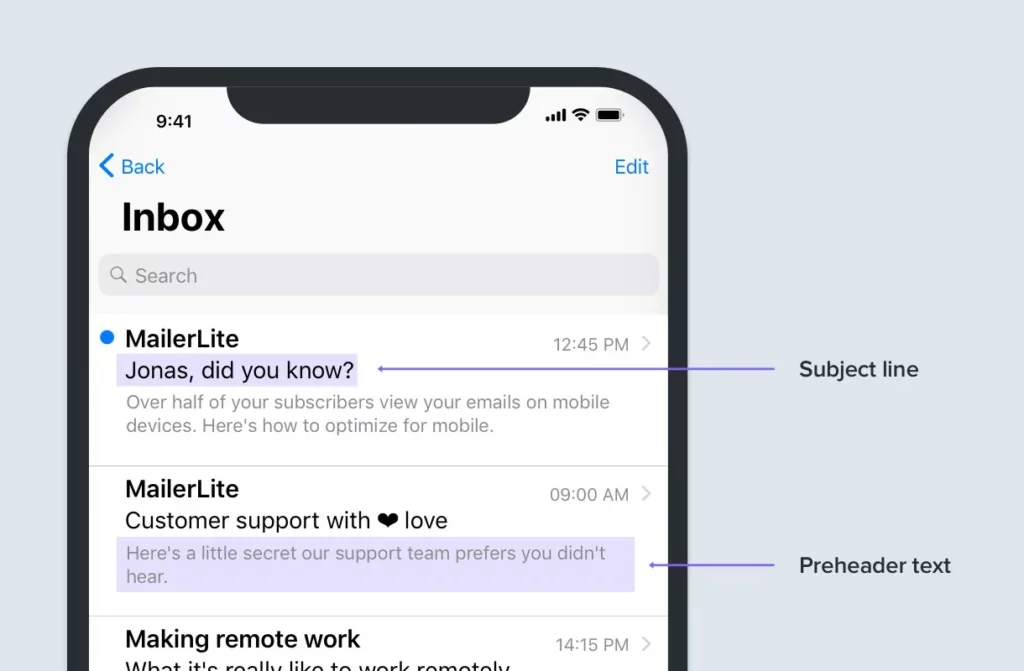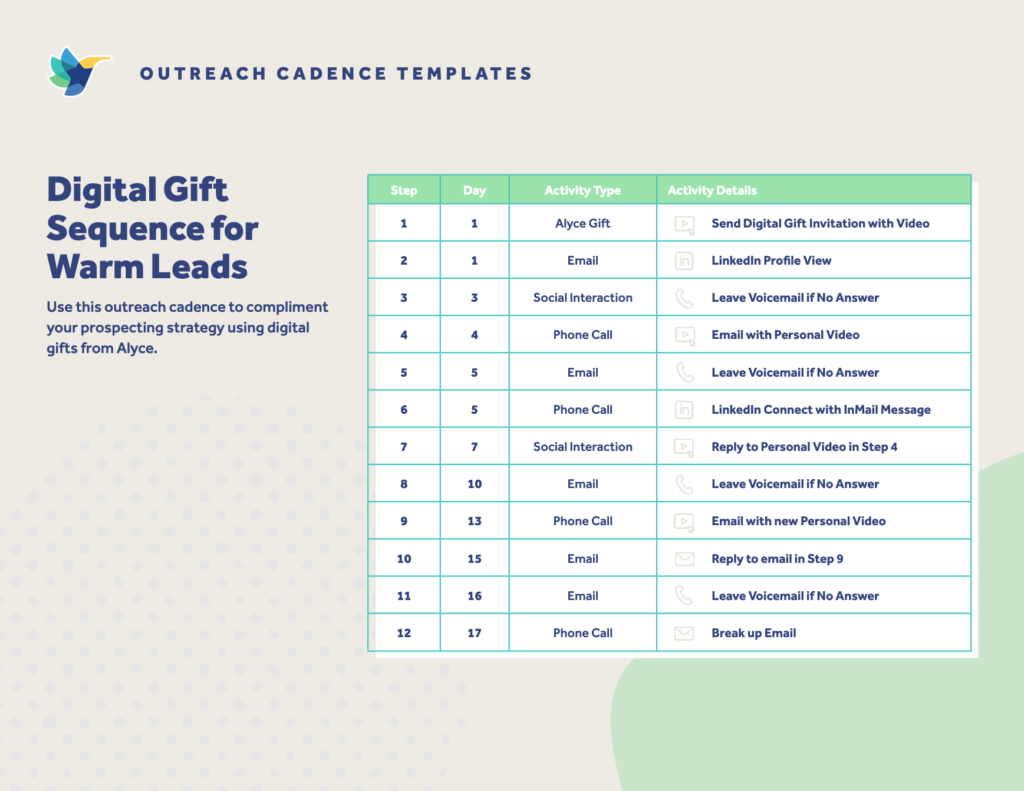
What if I told you that you could reach a decision-maker and get them to respond with a genuine desire to talk more?
With the art and science of persuasion, backed by decades of copywriting, your sales team can accomplish this — and the best part is that any sales rep can do it.
This guide will give you practical advice on producing a desirable outcome from a cold prospecting email.
- The Buyer’s Environment
- Elements of an Effective Email
- Prospecting Email Examples
- How to Write an Effective Prospecting Email
- Common Sales Email Pitfalls (To Avoid)
But first, consider the buying environment. It directly affects how persuasive and enticing your prospecting email is from the buyer’s perspective.
The Buyer’s Environment
No one wakes up and says, “I’m buying a new CRM today!” No matter how powerful, innovative, or award-winning your solution is, it means nothing to most prospects.
Most likely, the buying environment for your target audience looks like this:
- They are often focused on trying to be the best version of themselves.
- They receive dozens of "meeting requests" from hungry salespeople.
- They're inundated with boring, dry email campaigns.
- Most cold email templates are predictable after the opening line.
... Then, you enter the picture.
How will you prove to the decision maker that you have a solution to their problem?
You must make it crystal clear that you are responding to a very acute pain point. It must be obvious you've done your homework.
Value-first prospecting examples:
- An enterprising salesperson for an SEO agency might show declining keyword coverage for a domain compared to competitors.
- A BDR for a CRM platform might show the productivity gains of a similarly sized organization when they ditched their old-school CRM software.
- A sales rep from an email marketing platform might show that the potential customer's domain reputation is holding them back from better inbox placement.
The common theme in these examples is that the salesperson delivers value first. They also show that the rep is knowledgeable about their industry.
Take note that they don't make the message about whom they're funded by, listing off a bunch of SaaS brands for social proof, or pitching a webinar. Why? There's yet to be a desire or demand established.
Embracing these principles is essential to writing effective prospecting emails.
Let's dissect what makes an effective sales email that hooks its readers and generates sales pipeline.
Elements of a Persuasive Prospecting Email
The top outreach campaigns nail these persuasive sales email elements. Do yours?
Tone
Delivery matters, especially if you are writing sales emails to persuade. Avoid letting a bad day come through in your outreach, as well as sarcasm. Cold emails should be somewhere between positive and neutral in tone.
If you are unsure how to phrase your sentences to sound warm and welcoming, try reading them aloud with a peer, or have Google Translate play them back for you and listen intently.
Also, make sure that you keep your tone light but deft. This approach helps keep your email's direction clear and instills readers with confidence. You want to sound excited but not overbearing or pushy.
Word choice
We all want our emails to be full of information. However, a common mistake non-copywriters make is using colorful, vibrant language to get their points across.
The second mistake is the use of dense paragraphs with boilerplate language. Look: your decision makers and influencers have seen it all.
You don't
have to
write emails
like this.
Instead, use shorter, easy-to-absorb sentences. A paragraph should contain, at most, 2–3 short sentences each.
If your prospecting email takes up more length than what would fit on your cell phone, it's too long. Cut out unnecessary descriptions, cute metaphors, and benefit statements. Finally, be brief with your call to action (CTA).
Multimedia
Images convey what words can't. Do you have a slick user experience? Then show it off at the bottom of the email. But for a prospecting email, refrain from templates with a company name/logo at the top.
If you want to demonstrate value right away, show rather than tell. The brain processes images 60,000 times better than text.
Sales reps should consider using personalized videos. Doing so yields an opportunity to include a sales pitch tailored directly to the recipient.
Call to Action (CTA)
The soul of your sales process is having your audience interact with your email beyond reading it. Adding CTAs, such as hyperlinks and questions they can respond to, will help you build a connection with them.
Refrain from setting up a meeting. Yes, this sounds counterintuitive to sales prospecting. However, our friends over at Gong have proven that checking for interest absolutely crushes meeting requests.
If you link to case studies, do so judiciously. Describe precisely why the recipient needs to read them. Emphasize why the case study is relevant to them, not just the standard fare of metrics and KPIs.
With a strong prospecting email, you'll likely be introduced to the actual decision-maker who will evaluate your solution further.
Value
It takes more than a clever email subject line to engage your prospect. I can't emphasize this enough. Out of hundreds of sales emails I've received, the only ones I've engaged with and brought in leadership for delivered value upfront. All but a few emails beg for a quick call or a product demo.
Here are a few examples of value that have helped me in prospect emails:
- Competitive comparisons
- Template tools
- Ungated, full-length studies or reports
- Screenshots from your platform
From there, I educate myself and prepare to arrange a meeting with the company leaders who need to be involved. Without any of the above, it ain't happening.
Noteworthy Prospecting Email Examples
Want to know what these elements look like in practice? Take a look at these sales email templates that show you how to write your own effectively.
Email #1: LogDNA
Subject: Do you have a technical contact?
Hi there,
I'm the co-founder of LogDNA, my company provides server logging to engineers (something almost every companies requires). We'd love to provide you a special discount offer.
I'm an alumni of the accelerator Y Combinator and I'd love to see how we can help out the startup community.
Any chance you might be able to point me in the right direction? Again, apologies if this email is completely outside your scope. I'd be sincerely grateful if you might be able to redirect my inquiry.
Thanks,
Why this email is effective:
- It asks the recipient questions (increasing the chance that they will answer).
- It starts with an introduction for the sender and their company.
- It offers the recipient a discount relative to their company's size.
- It has a fallback — if the recipient isn't the right person for the email, the email humbly requests that they pass the email to the right person.
Email #2: Gusto
Subject: Thoughts on Gusto?
Hi {!first_name},
I know these sales emails can be a little awkward so here's a picture of our company dog, Finnley, standing on a desk to break the ice:
(Photo)
Now that we're old friends, if you had to give your current payroll provider a score between 1 and 10 what would it be?
If you didn’t just yell “10!” at your monitor, here are two very simple, very good reasons why we should have a quick conversation about moving {!company}'s payroll to Gusto:
Things move faster on Gusto. Running payroll takes anywhere between 36 seconds and 10 minutes.
I promise to include another picture of Finnley in my next email.
Looking forward to filling up your inbox with pics of this cute dog,
-John
Why this email is effective:
- It's from a person, not the company.
- It employs humor and a photo to grab the recipient’s attention.
- It tells the reader about the upcoming sales email and builds excitement.
Email #3: Salesloft
Subject: (First name)’s (Company) + Salesloft
Hey {!first_name},
Big fan of your company's work. Would you be open to a discussion around how you approach customer acquisition?
Reason I ask, SalesLoft was built for teams like yours to streamline the engagement process with prospective clients. The platform combines phone, email, and social touches to ensure consistent execution of a sales cadence.
Whats the best way for us to connect?
Cheers,
Why this email is effective:
- It isn't pushy but introduces the sales engagement software and its use case.
- It sets an intention for the email — to inquire if the recipient is open to a meeting.
- It asks the reader to select their desired communication platform.
Curious for more? Check out more emails like these on Good Sales Emails. Plenty more sales-focused emails to inspire your outreach.
Now that you've seen several examples of persuasive emails, it's time to test your skills. Write one of your own by following the guidelines in the next section.
How to Write An Effective Prospecting Email (6 Steps)
Here are some practical tips any sales rep can employ to craft excellent prospecting emails.
Step 1) Apply gifting to your sales strategy
Your average prospecting email is cold, so it can be tricky to connect with recipients. That's where corporate gifting comes in.
Sending a personal, relevant, and thoughtful gift can earn a recipient's attention and show them your outreach is explicitly meant for them. It also leaves them with something to remember you by — a tactic sure to keep you on their mind.
To leverage gifting on a larger scale, use a corporate gifting platform like Alyce, which helps sales teams choose high-quality gifts from sales tools like Outreach, HubSpot, and Salesforce.
Step 2) Use a direct subject line
Hook your audience in 40 characters or less. Entice them to read the rest of your sales email by writing a punchy subject line relevant to their interests and needs.
So, what's an example of a direct subject line? These should pique curiosity with a somewhat ambiguous phrase relevant to the prospect's industry.
- Scaling [function]?
- Idea for [category]
- CRM market share
- [your brand] x [company name]
- Noticed this on your site
- Inbox placement — feedback
Do not use the synthetic corporate lingo found on your one-pagers and marketing campaigns. (Yes, I'm suggesting this even as a marketer!) These assets serve different purposes and are for those more interested in your product or service.
The point here is simple: stimulate demand with a concept relevant to the reader. As the late copywriter Joe Sugarman explained, the headline's job is to get them to read the next line. And that line? To get the reader to read the following line — so much so that they fall in love, creating a slippery slope of interest that captivates them.
All of that starts with the subject line of the prospecting email.
Pro tip: We recommend mentioning a gift in the subject line. For more inspiration, check out our list of gifting email templates. These subject lines carry an impressive increase in email opens compared to average sales emails.
Step 3) Cut the fluff and adapt to your audience's reality
Unlike this blog post, you want to ensure readers can read your sales email in one brief sitting. Avoid the use of technical phrases and lengthy sentences whenever possible.
Requisite phrases within an industry can boost your perceived relevance. For example, are you reaching out to a CFO? "CAC," "Working Capital," and "OpEx" are common lingo. Just make sure you know what you're talking about.
If your email exceeds the length of your mobile phone screen, it's too long. So trim out anything not pertinent to that cold email.
P.S. No one cares about your investors — they care about what you can do for them. If you want to link a supporting customer testimonial in your postscript line, go for it.
Step 4) Optimize the email preview text
Half of the battle is getting your prospective clients to open your email, and you can do that by optimizing your preview text.
Also known as the "pre-header," email preview text is the first 40–90 characters in an email that appears when scanning one’s inbox. It's a snippet of the rest of the email.
What does this mean for sales reps?
Ensure that the first line flows smoothly from the subject line. You can build up curiosity, a personal intro, and keep it all short. Be careful using emojis — these can hurt open rates.
Step 5) Be professional, but sincere
Salespeople typically have thick skin when accepting feedback from upset prospects. I've seen rejections bring out the worst in people. The last thing you want to do is to depart, having left a negative impression of your brand.
Ensure that your email comes across as cordial and sincere. This means it's in the Goldilocks zone between personal and professional.
Avoid coming across as insulting, vengeful, or ice-cold. Instead, ask the prospect for suggestions on how to improve. You'd be surprised at what you'll hear — and you can apply those tips to your next outreach email.
Your sales email should address the recipient by name and name a referral if you have one. The persuasive sales email initiates a strong relationship, not just more pipeline that will close this quarter.
Step 6) Ask a thoughtful question
Thoughts on this? Plans to expand here? Interested in learning more? Am I off base? These types of questions are helpful to include in your email campaign.
People can respond to some binary questions (yes or no), but other questions are open-ended. Either way, you are checking for interest instead of saying, "Does next Tuesday at 11 am work?" in your message.
The types of questions that get answered most in a sales email are:
- What challenges do you have with [function]?
- How does [activity] work for you?
- What do you like about using [product]?
- What priorities are on your radar this next quarter?
You can start a conversation depending on the research you've done about your potential customer. But, again, this sales process of discovery happens long before you deliver a sales pitch.
Sales Email Pitfalls to Avoid
Only some prospecting emails perform well, so don't take it personally when someone says "no thanks" for all-caps "UNSUBSCRIBE."
It's not the email's fault per se — the prospect's need or desire just isn't there.
Don't make these email copy mistakes (taken from some of the worst sales emails we've seen):
1) Being too casual
Establishing a healthy relationship with a prospect requires more nuance than just writing sales emails and crafting sharp email copy.
In other words, you must take more steps before reaching your goal. In this case, earning trust from your potential customer is a must.
Using overly casual terms such as "buddy" and "dude" won't aid in developing a professional relationship with your prospective client. Building rapport is essential, and you want to make them comfortable with the brand.
2) Using only one email
Even if your email has all the effective elements, convincing a cold prospect may require more.
Your email likely landed in their spam folder. Unfortunately, if you have a large sales prospecting team, deliverability may be so-so.
What does this mean for you? Well, that you’ll have to try a different approach. First, try an alternative email subject line or a different opening line. If that doesn't yield a response, reach out on social media platforms like LinkedIn.
A follow-up email nets a 27% response rate, as opposed to the 16% average reply rate of emails without a follow-up.
It's okay to send a follow-up email if they have yet to express interest, but give it some time before you try again. Lastly, only follow up a few times.
3) Don't just ask for time
Admittedly, we all want time in our prospects' calendars. But, with demand or interest established, it won't happen.
Time is currency. You're either helping them reclaim time from another laborious or mentally taxing activity or costing them.
What other CTA can you use besides a meeting link or asking if they're interested?
Include one hand-picked link from the company's blog or resource center. Hand-picked is better because if you take the time to find the right link for the prospect, it will resonate more strongly than a generic press release.
Only when the conversation suggests a growing sense of curiosity is a meeting request appropriate. Ensure that your BDR-AE handoffs are solid so prospects can avoid repeating themselves. This way, you can create more sales pipeline with each assist.
Outbound Sales Is Easier with Alyce
A fool-proof prospecting email that works every time does not exist.
But, by putting these tips into practice, you can make each attempt to engage prospects count. Gifting, as one of the available outbound tools, can improve your sales velocity and pipeline.
Gifting isn't a cure-all, but it can enhance the success of your outbound sales and marketing campaigns. It empowers salespeople to think differently about the value of a prospect when they have to spend more to get prospects to engage.
The bottom line is clear. You have to put some care and thought into your prospecting emails. Decision-makers are tired of being on the receiving end of bulk lead-generation campaigns.
With the vast treasure trove of data and sales engagement tools, such as Salesloft and Outreach, there's no reason to annoy people who aren't interested in your service.



